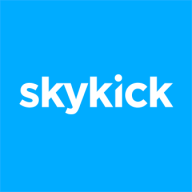


SkyKick Cloud Manager and Spot are two competitive solutions in cloud management. Spot appears to have the upper hand due to its advanced feature set and customer service excellence.
Features: SkyKick Cloud Manager includes streamlined migration services, automation tools, and simplified management tasks. Spot offers predictive scaling, comprehensive monitoring tools, and enhanced operational efficiency.
Ease of Deployment and Customer Service: SkyKick Cloud Manager provides a straightforward deployment process and reliable support, easing cloud transitions. Spot's deployment process is efficient, combined with proactive customer service that is highly rated for responsiveness.
Pricing and ROI: SkyKick Cloud Manager has moderate setup costs with satisfactory ROI from its streamlined features. Spot, although higher in cost, provides a substantial long-term ROI through advanced capabilities and resource optimization.


IBM Turbonomic offers automation, planning, and right-sizing recommendations to streamline resource management, improve efficiencies, and optimize costs across virtualized environments and cloud platforms.
IBM Turbonomic is valued for its capability to optimize resource allocation and monitor virtual environments efficiently. It facilitates automated decision-making in VM sizing, load balancing, and cost optimization for both on-premises and cloud deployments. Users can leverage insights for workload placement, ensure peak performance assurance, and effectively right-size across VMware and Azure. The ongoing transition to HTML5 aims to improve visual and navigational ease, while expanded reporting features are anticipated. Opportunities for improved training, documentation, and integrations enhance platform usability and functionality.
What Are the Key Features?In finance, IBM Turbonomic aids in maintaining platform efficiency during market fluctuations. Healthcare organizations leverage its capability for resource optimization during high-demand periods to enhance patient care support. Retailers use it for planning in peak seasons, ensuring resources align with fluctuating demand to maintain performance continuity.
SkyKick is a new kind of migration application that makes it fast, safe, and easy to move small and medium businesses to Office 365. SkyKick’s Application Suite is a cloud based solution consisting of three products that work together to help plan, move, and setup the migration to Office 365.
Spot provides dynamic workload management for cloud environments, offering cost optimization and enhanced performance. It stands out with its unique approach to managing resources efficiently.
Spot is designed to enhance cloud resource utilization and cost-effectiveness through intelligent workload management. With real-time analysis, Spot determines and deploys the most efficient resources, ensuring optimal performance for applications. Businesses benefit from reduced cloud expenses and increased operational efficiency, making it an essential tool for managing cloud infrastructure effectively.
What are the key features of Spot?In finance, Spot ensures cost-effective cloud computing for trading platforms, while in e-commerce, it dynamically manages back-end processes. In the entertainment industry, Spot optimizes media streaming by deploying resources when user demand spikes. Each industry leverages Spot to maximize performance and minimize operational costs, demonstrating its versatility and reliability across sectors.
We monitor all Cloud Management reviews to prevent fraudulent reviews and keep review quality high. We do not post reviews by company employees or direct competitors. We validate each review for authenticity via cross-reference with LinkedIn, and personal follow-up with the reviewer when necessary.